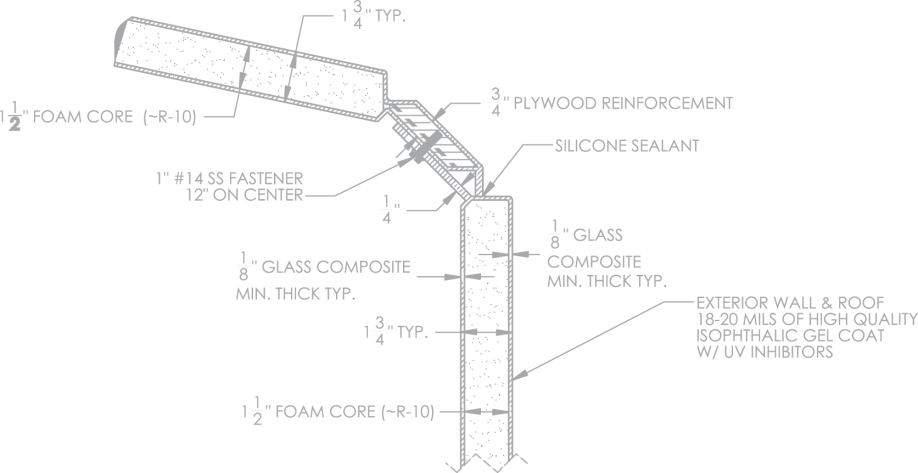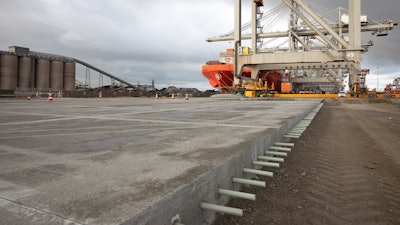Why Composites are Transforming Construction Products
Why Composites are Transforming Construction Products
Blog Article
Unlocking the Ecological Benefits of Recycled Composites in Building and Layout
In the realm of construction and layout, the usage of recycled composites holds considerable guarantee for enhancing sustainability practices and reducing ecological influence. The shift in the direction of a more lasting future in these industries hinges on unlocking the complete potential of recycled compounds.

Environmental Influence Decrease
The reduction of ecological effect with using recycled compounds in construction and layout plays an important function in sustainable techniques. By incorporating recycled compounds right into structure products, the building sector can dramatically lower its carbon footprint and add to a more environmentally friendly future. These lasting products, made from repurposed plastics, timber fibers, or other recycled aspects, use a feasible option to traditional building materials without jeopardizing on high quality or longevity.
Recycled composites help draw away waste from land fills and minimize the requirement for removing raw products, thus saving all-natural resources. In addition, the manufacturing procedure of these composites often eats less energy and gives off fewer greenhouse gases compared to creating virgin materials (composites). This change in the direction of using recycled compounds not only lessens environmental damage but likewise promotes a circular economy by urging the reuse of materials that would or else be disposed of
Waste Minimization
With an emphasis on reducing waste in building and layout, the combination of recycled composites supplies a lasting solution to lower environmental influence. Waste reduction is a critical element of sustainable methods, and using recycled composites offers a possibility to attain this goal properly. By making use of materials that have actually currently offered their first objective, such as recycled plastics or reclaimed wood fibers, the building and style industries can significantly decrease the amount of waste produced and sent out to land fills.
Recycled composites have the potential to divert substantial amounts of waste from conventional disposal methods, adding to a more circular economic climate where resources are used efficiently. Additionally, the production process of recycled composites commonly takes in less power and produces fewer exhausts contrasted to virgin products, further decreasing the ecological footprint of building and design jobs.
Applying waste reduction approaches through the unification of recycled composites not only helps in saving natural deposits yet likewise advertises an extra lasting technique to building and creating for a greener future.
Power Conservation
Integrating recycled composites not just minimizes waste in construction and style yet likewise plays a crucial function in enhancing energy conservation practices within the sector. Making use of recycled composites in construction can considerably add to power preservation with different methods. To start with, the manufacturing of virgin materials typically requires substantial power inputs, whereas making use of recycled composites eats less power, thus lowering overall power usage. In addition, integrating recycled compounds can add to better insulation homes in structures, decreasing the requirement for extreme heating or cooling, and subsequently lowering energy use for environment control. The light-weight nature of many recycled composites can lead to lighter frameworks, calling for much less energy for transport and installment. By advertising using recycled compounds in building and style, the market can make substantial strides towards attaining energy effectiveness and decreasing its carbon footprint, inevitably contributing to an extra sustainable constructed atmosphere.
Carbon Impact Reduction
Enhancing sustainability practices through the utilization of recycled compounds in building and layout dramatically minimizes the carbon impact of the market. By incorporating recycled products right into the production of composites, the requirement for virgin resources reduces, resulting in reduced energy intake and greenhouse gas exhausts connected with traditional production processes. This decrease in carbon impact is vital in combating environment adjustment and advertising a much more ecologically friendly method to construction and layout.
Furthermore, making use of recycled composites also aids in diverting waste from garbage dumps, consequently minimizing the ecological effect of disposal and view publisher site promoting a circular economic climate. The carbon impact decrease achieved through the adoption of recycled compounds straightens with the worldwide push towards lasting techniques and the decrease of industrial discharges. It showcases a commitment to accountable resource management and a shift towards greener alternatives in the construction and layout industries. Eventually, by prioritizing the assimilation of recycled compounds, the market can make considerable strides in reducing its carbon impact and adding to an extra sustainable future.
Lasting Future
The assimilation of recycled compounds in building and style not only addresses immediate environmental problems yet also lays a solid structure for a lasting future in the sector. By integrating recycled composites right into structure materials and products, the building and style markets can substantially lower their reliance on virgin resources, resulting in an extra circular economic situation. This change towards sustainability is vital for minimizing the environmental effect of conventional construction methods, which often result in high degrees of waste generation and resource deficiency.

Verdict
Finally, recycled composites provide significant environmental benefits in building and construction and layout by minimizing ecological impact, decreasing waste, saving energy, lowering carbon footprint, and advertising a sustainable future. Embracing making use of recycled composites can add to a much more environmentally-friendly technique to structure and layout, inevitably causing an extra lasting and greener future for all.
The reduction of ecological influence through the use of recycled compounds in construction and design plays an important role in sustainable techniques.With an emphasis on minimizing waste in building and style, the assimilation of recycled composites provides a lasting solution to lower environmental effect. By advertising the usage of recycled composites click to find out more in construction and design, the market can make significant strides in the direction of accomplishing energy efficiency and decreasing its carbon impact, eventually adding to an extra lasting developed environment.

Report this page